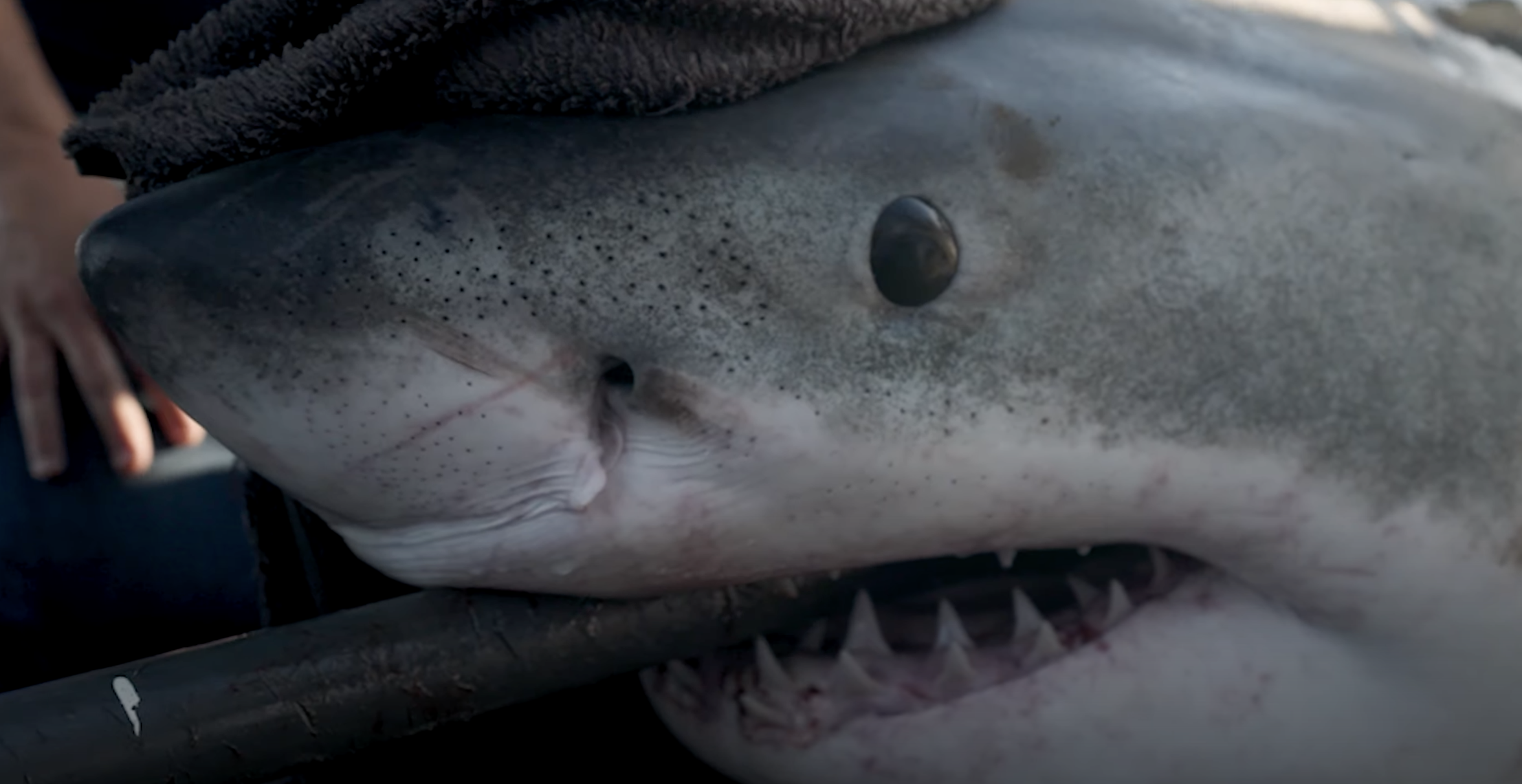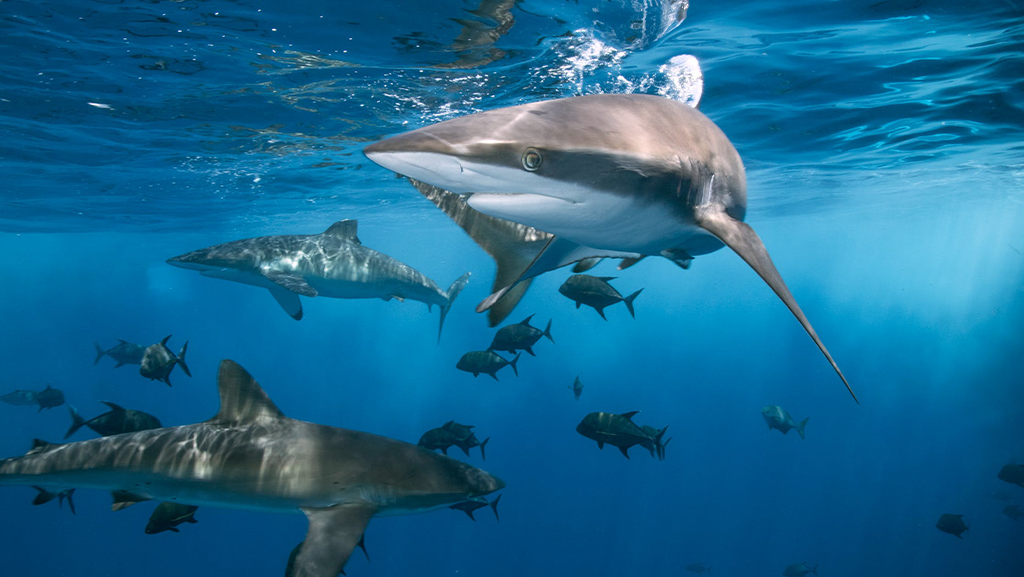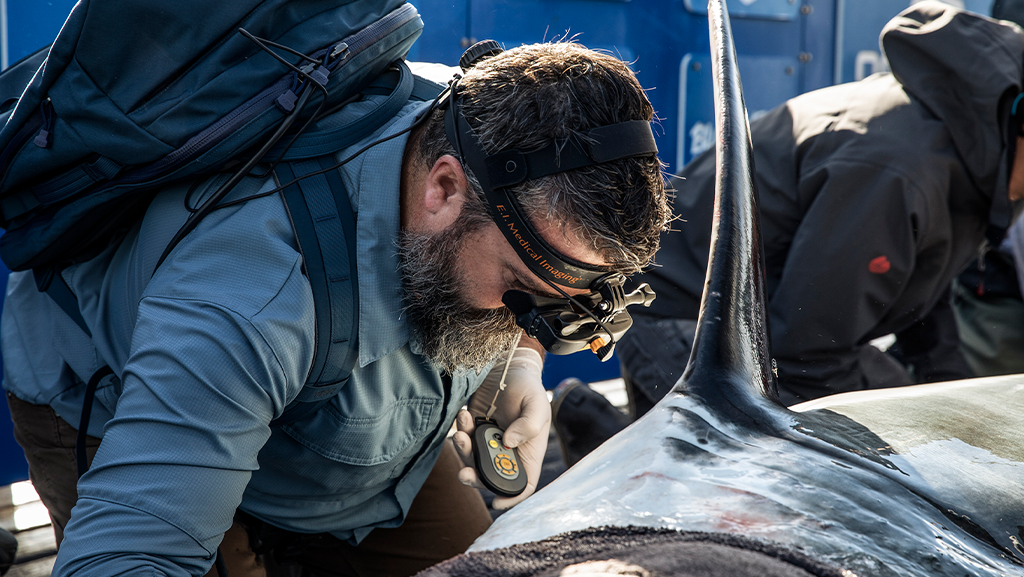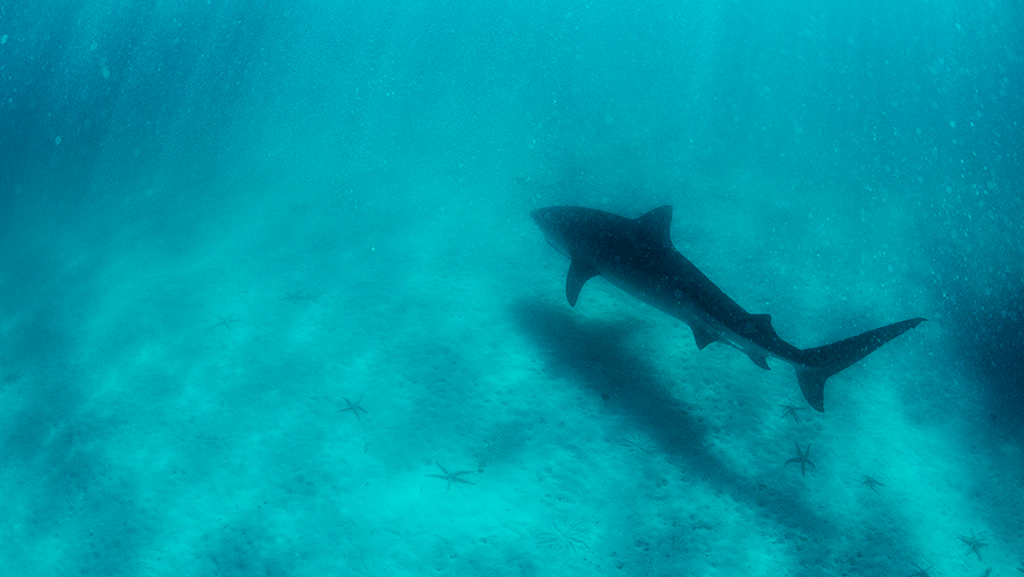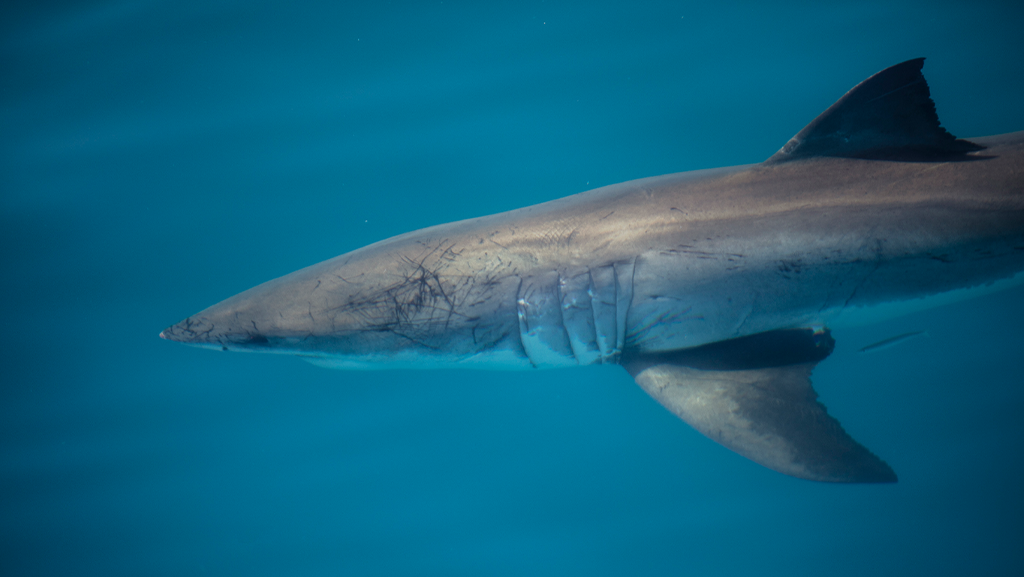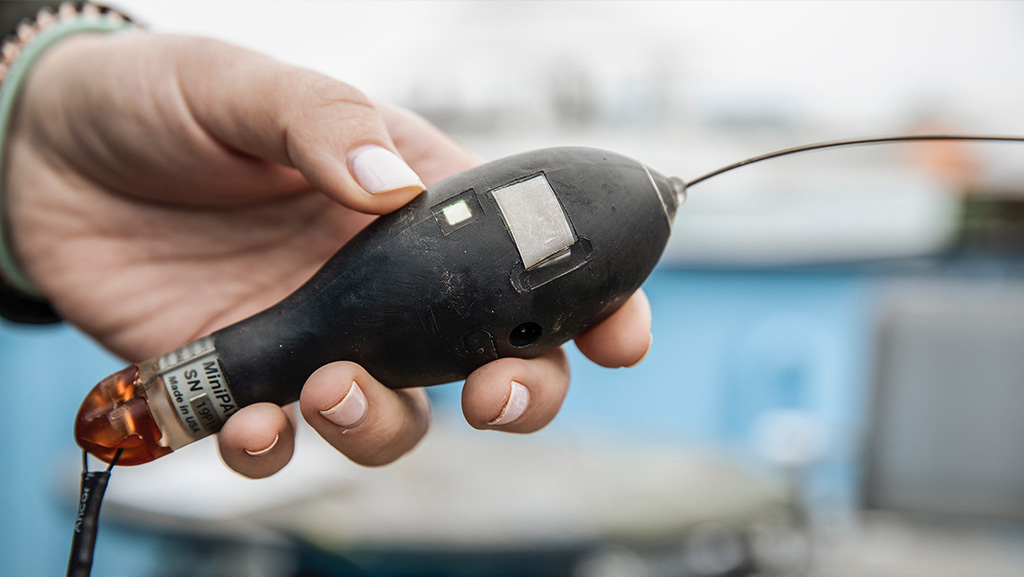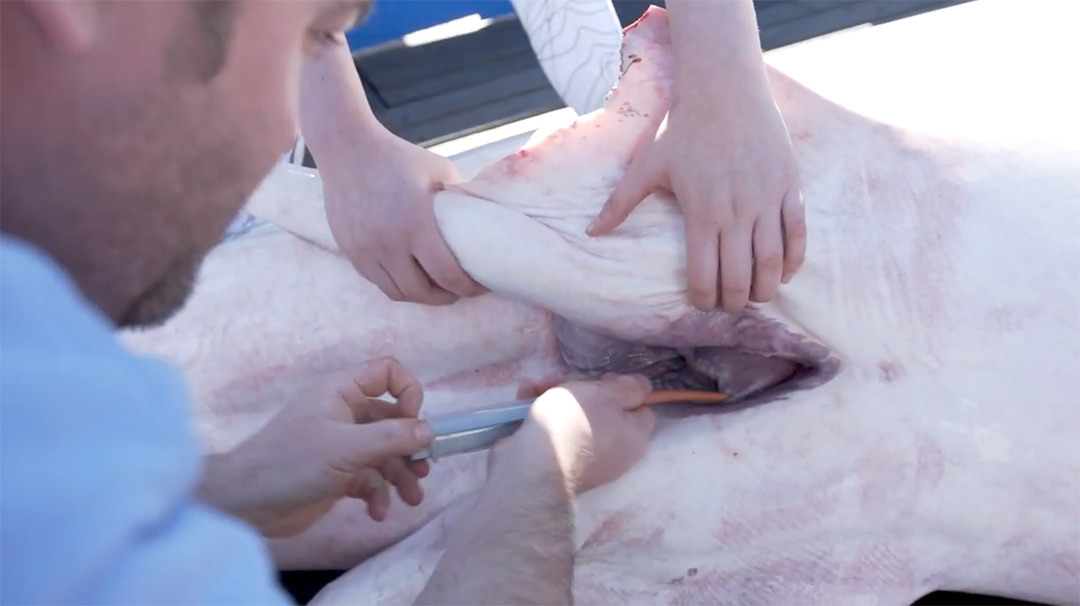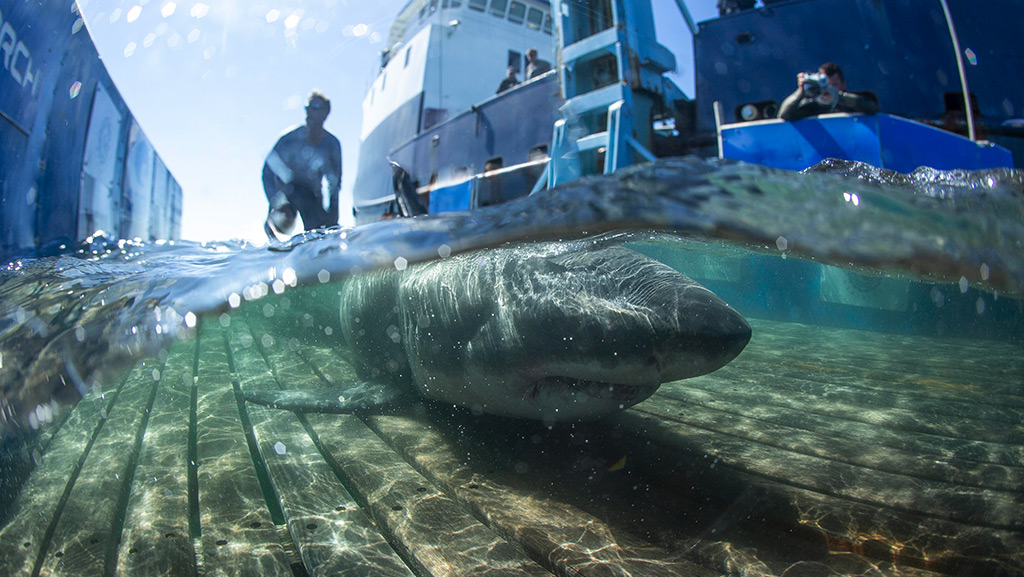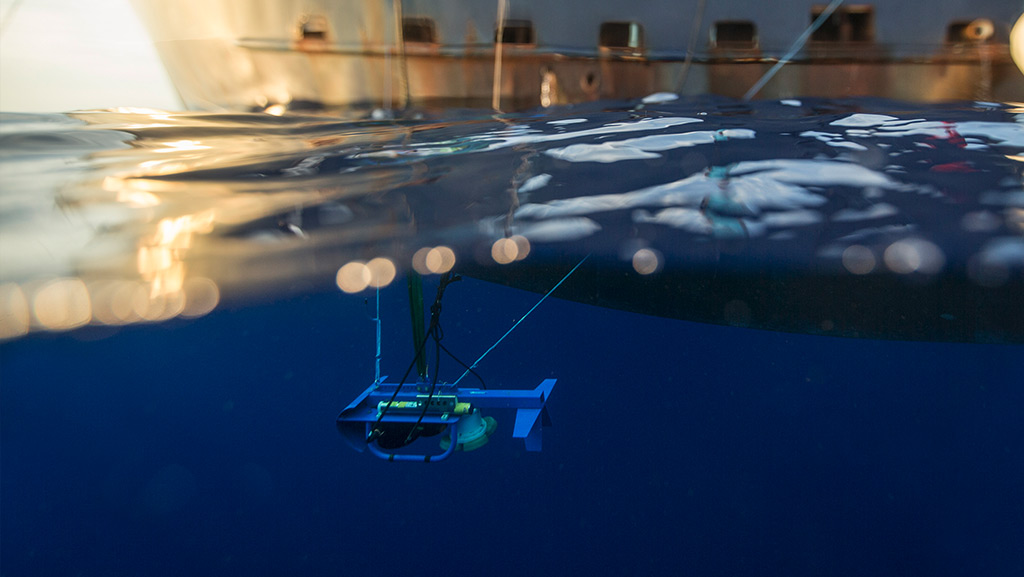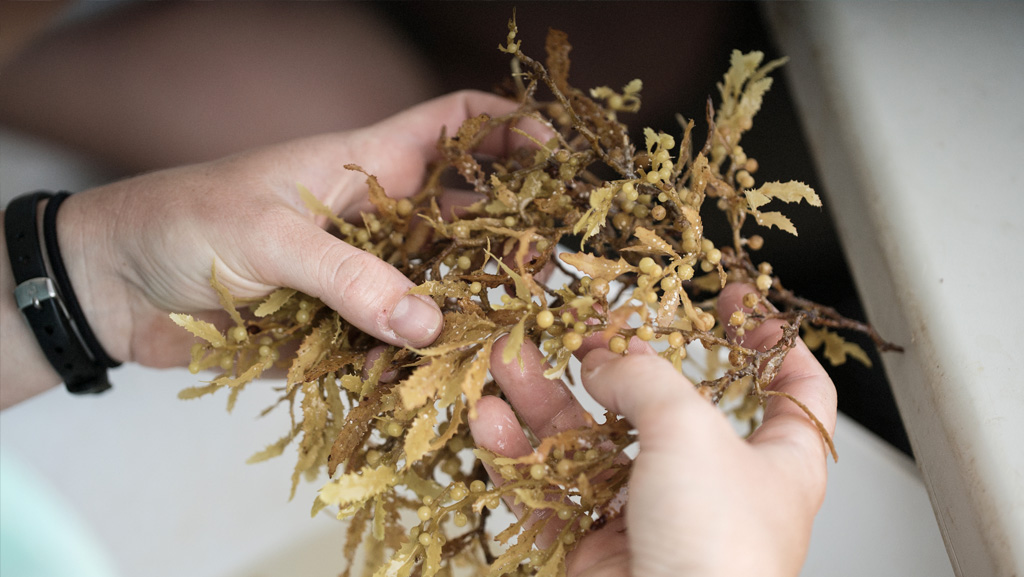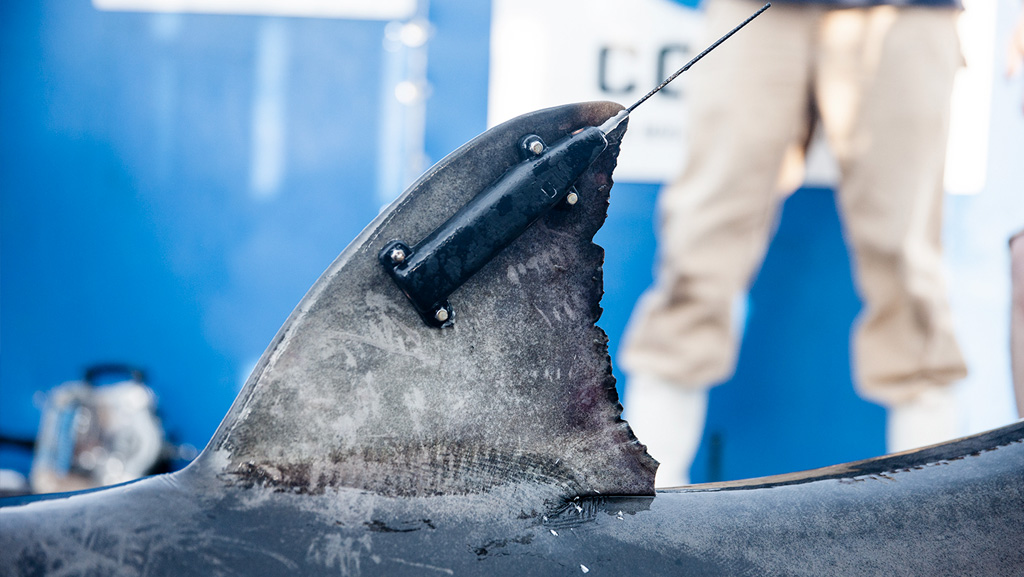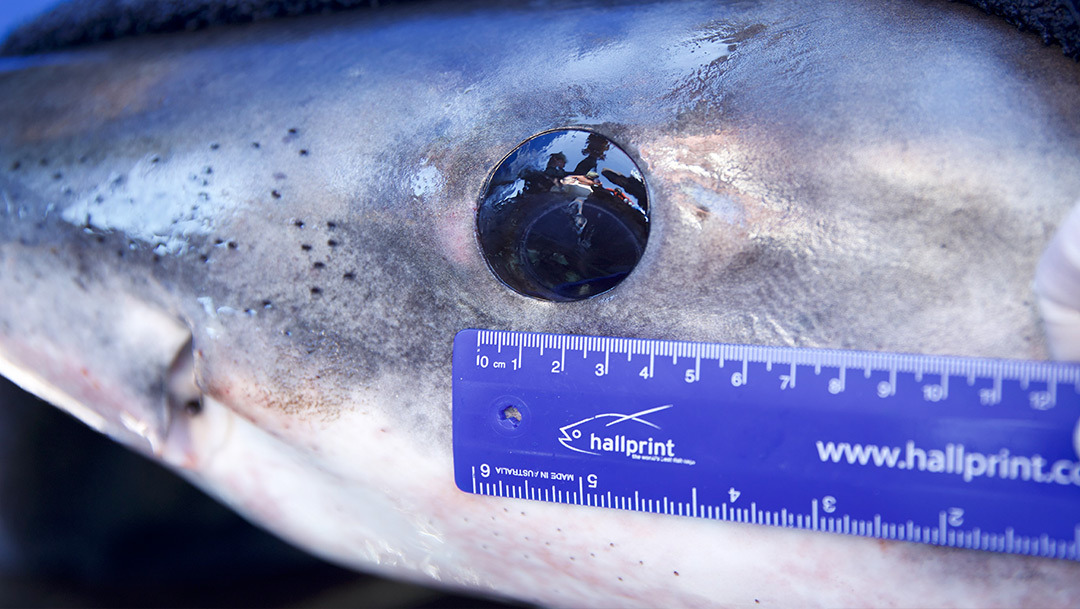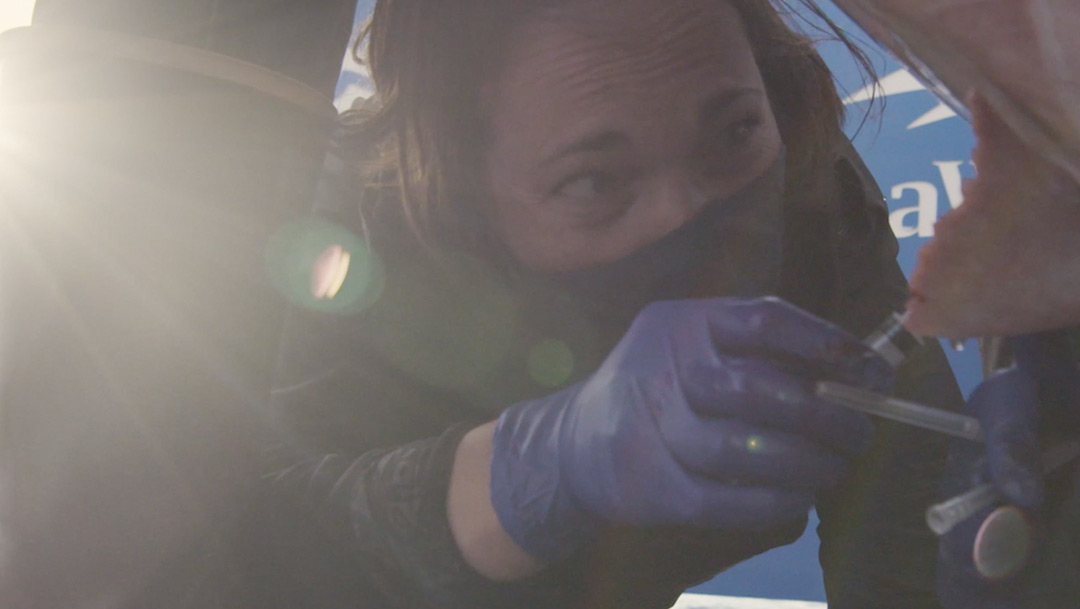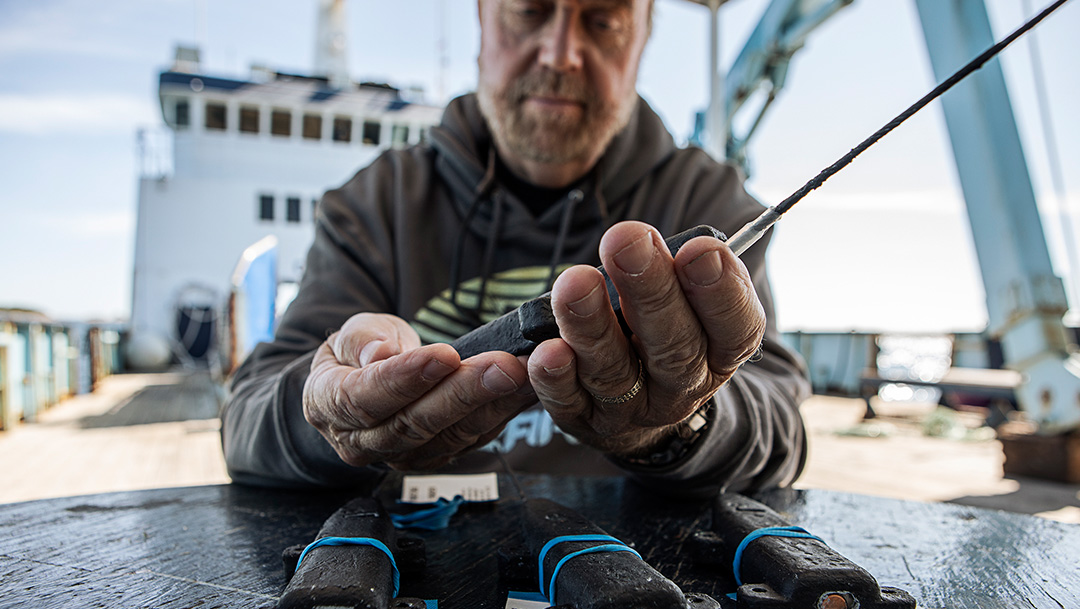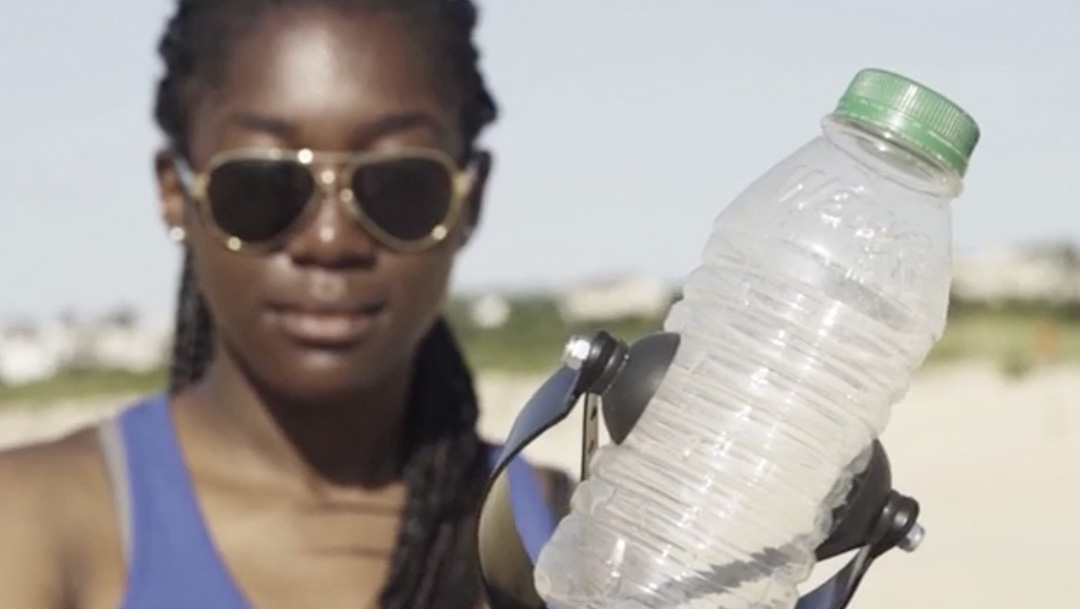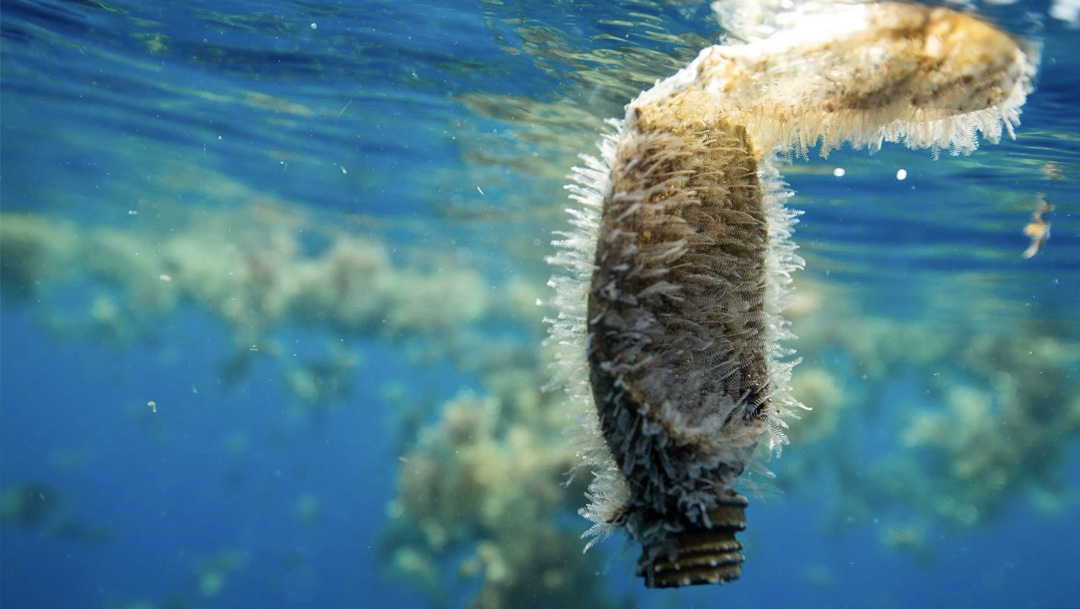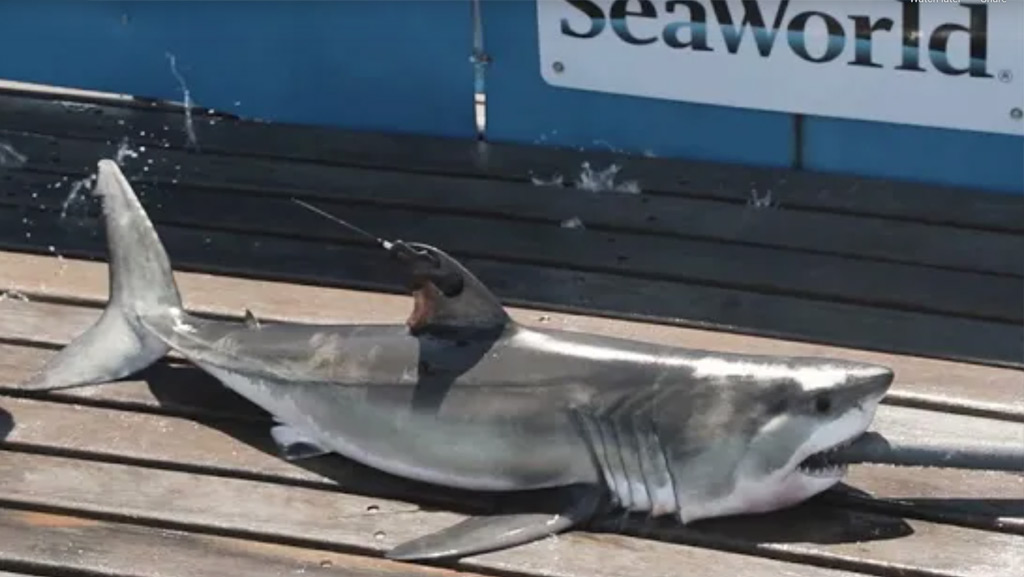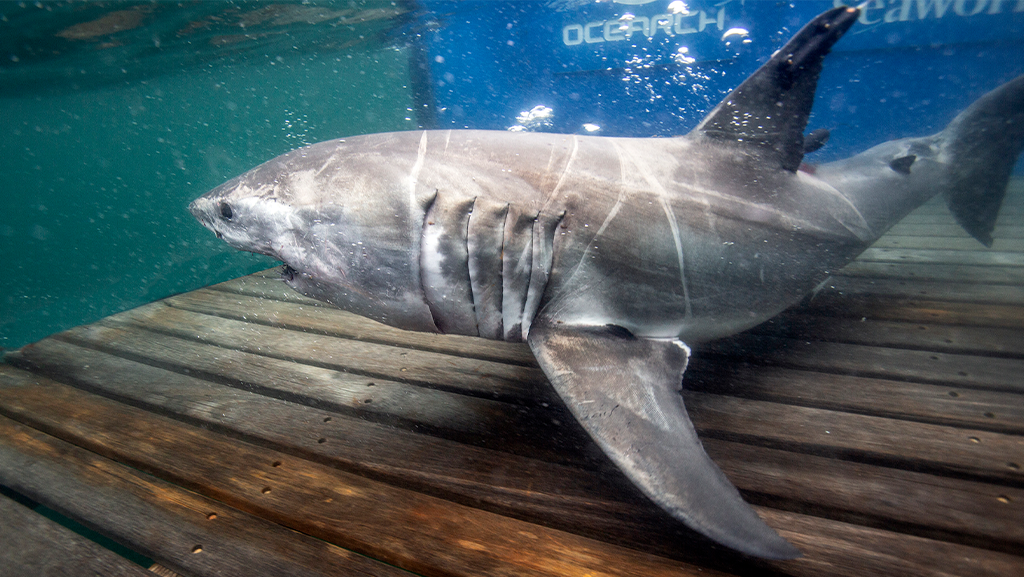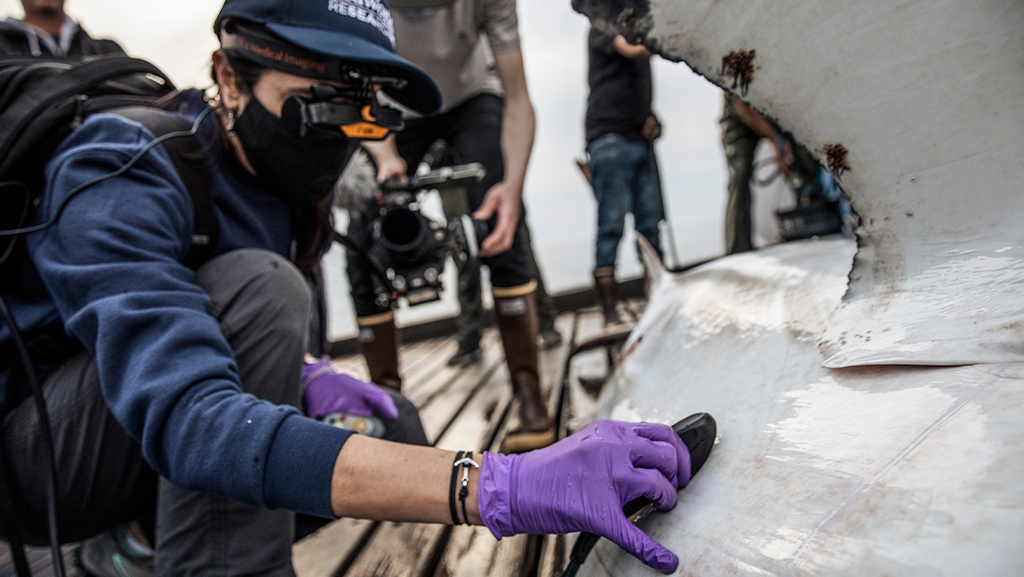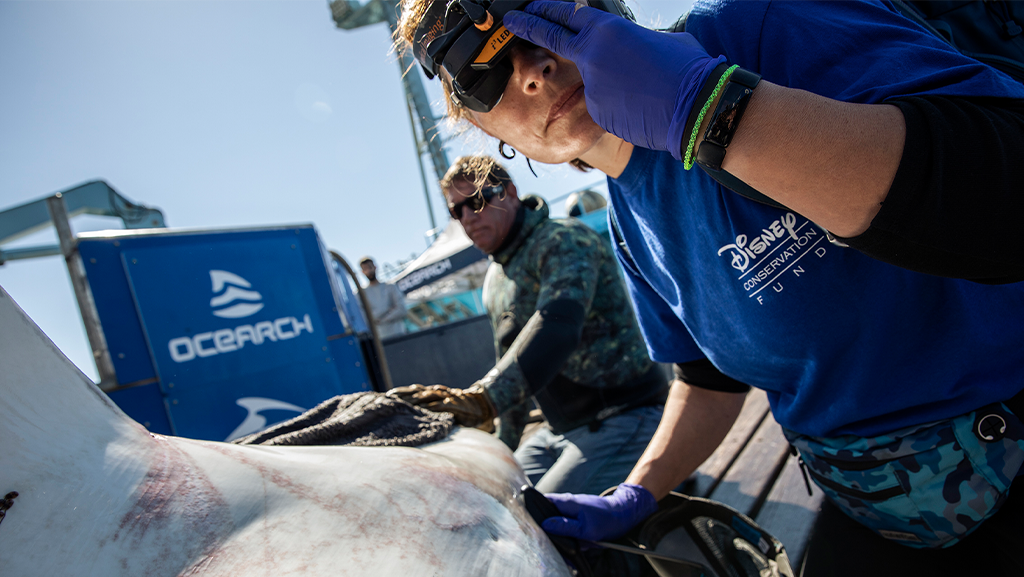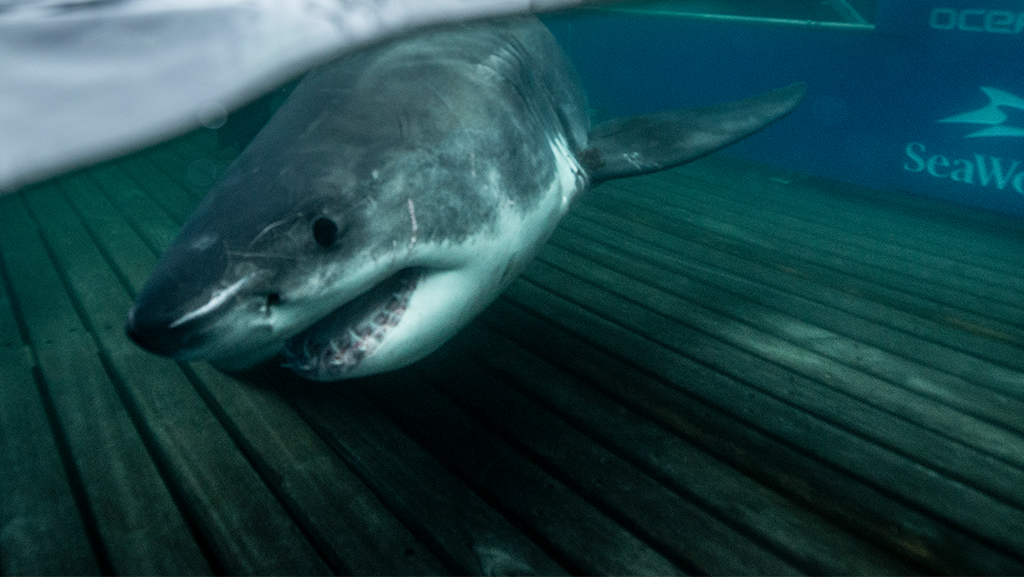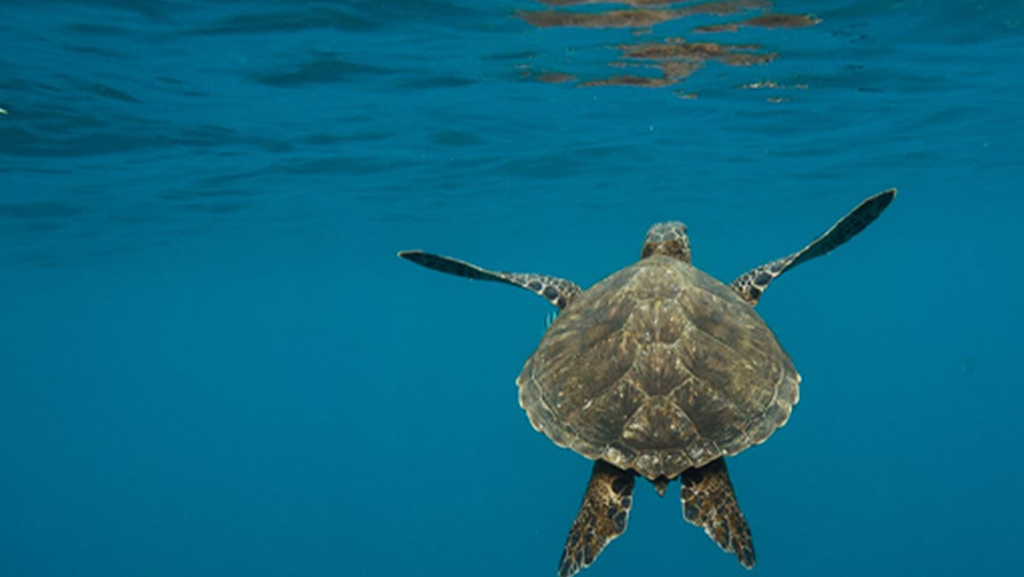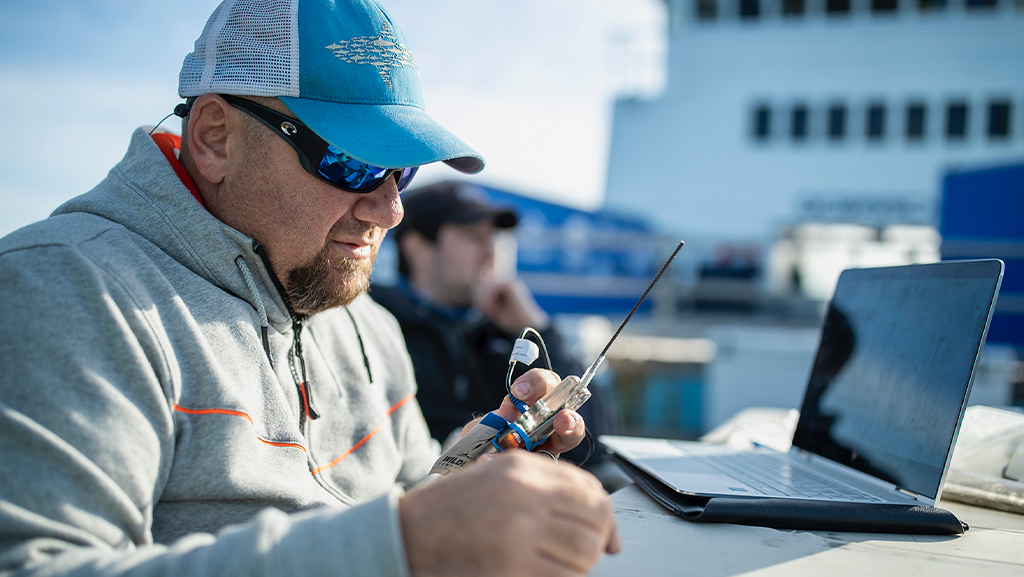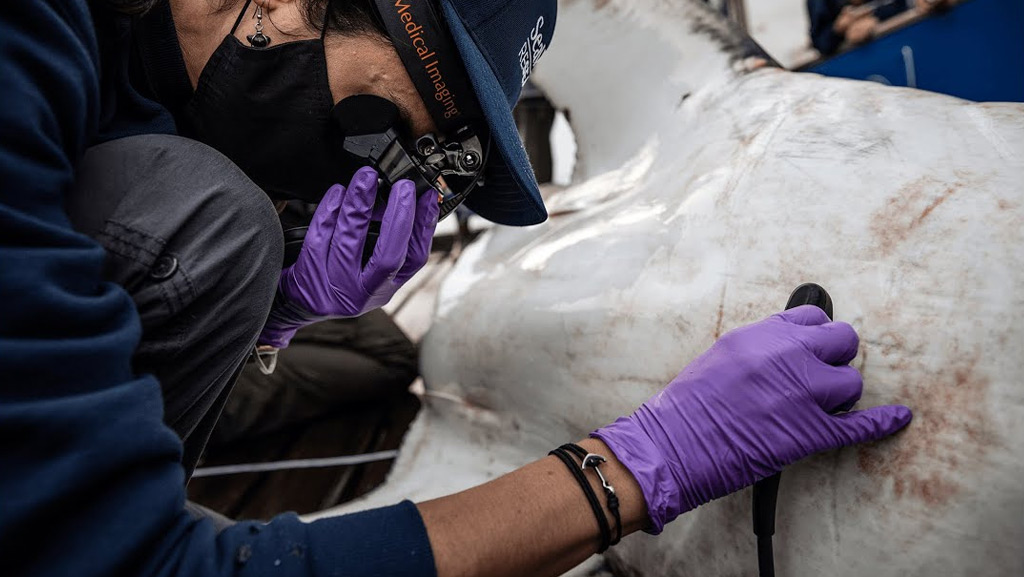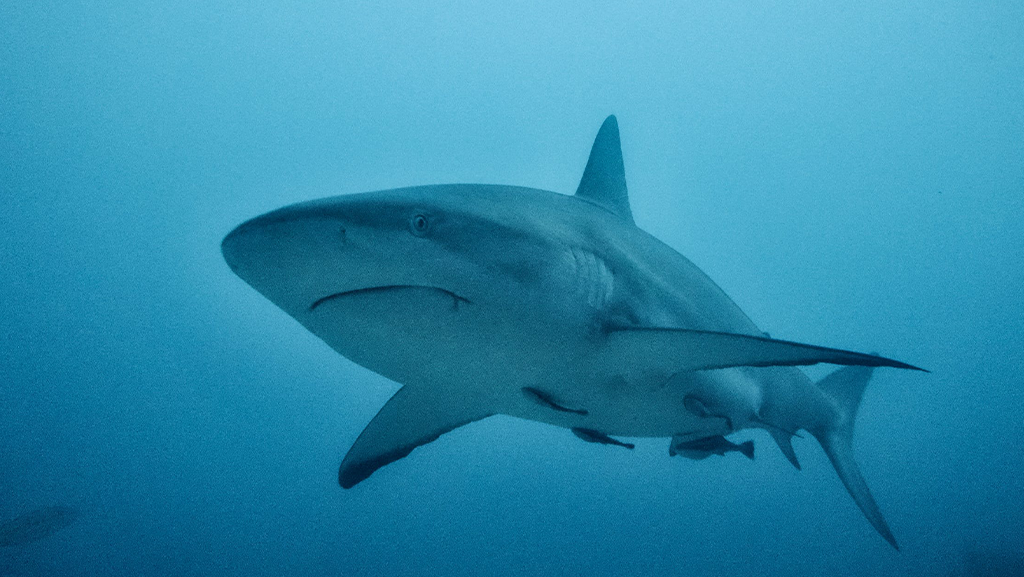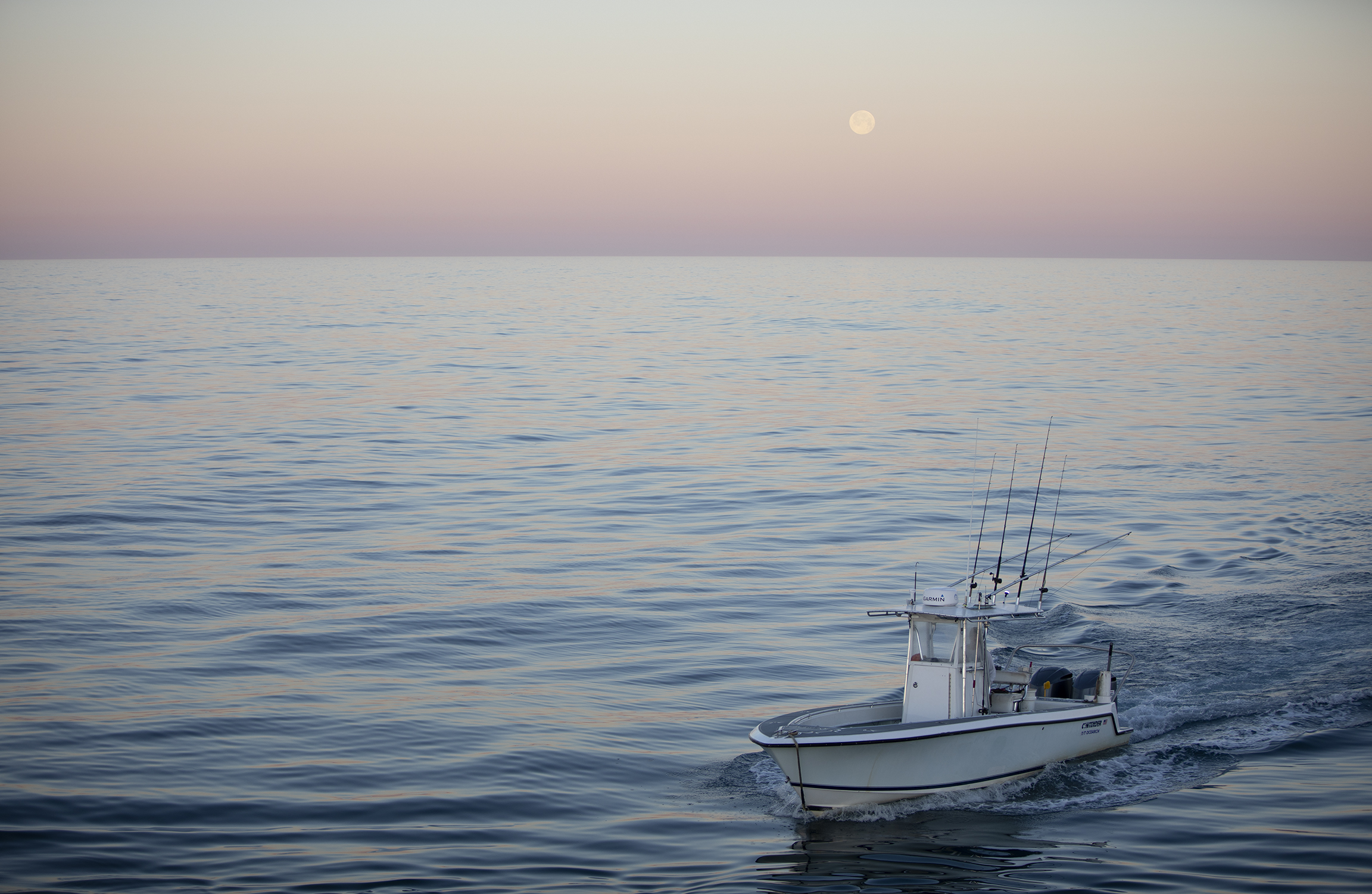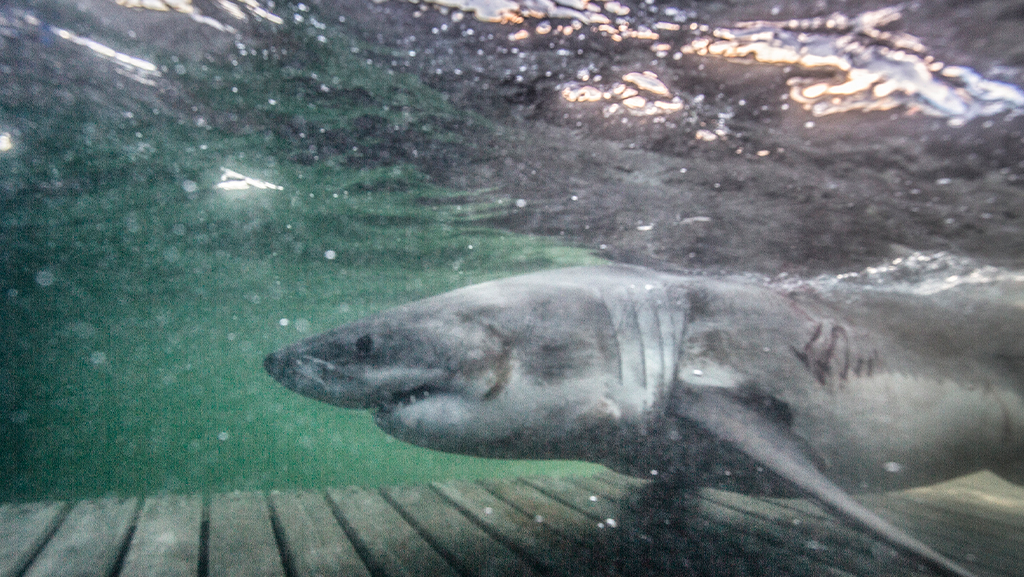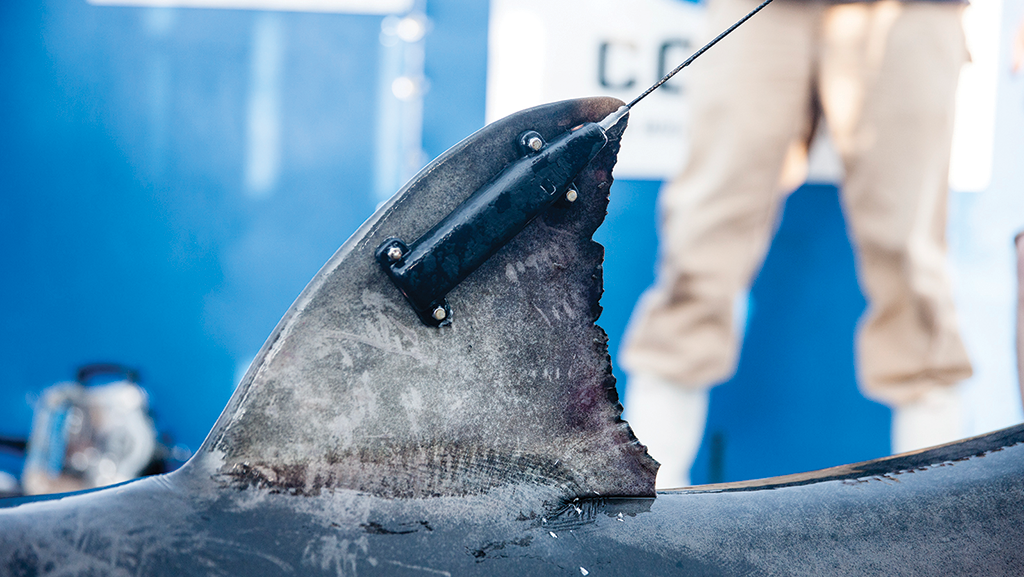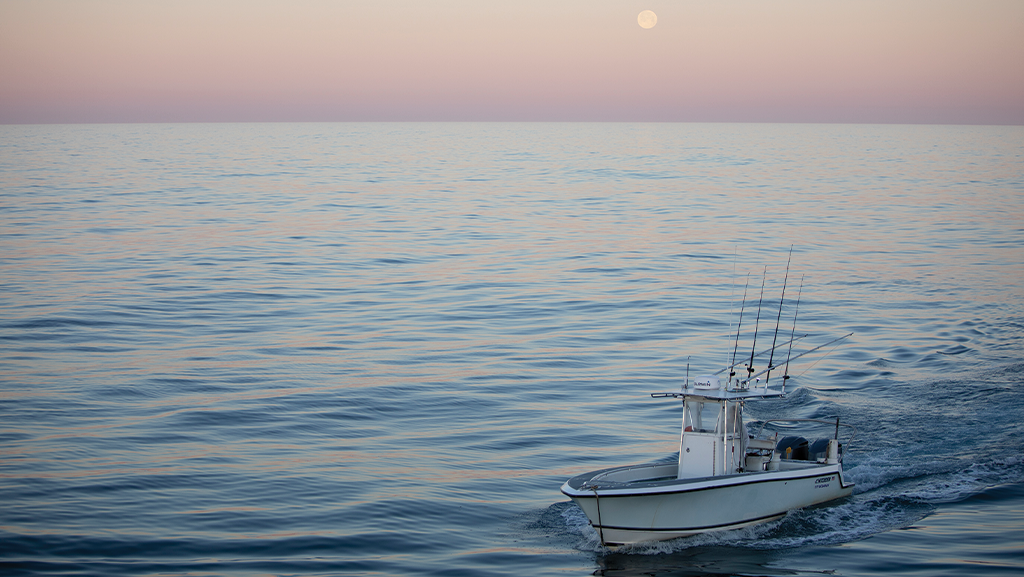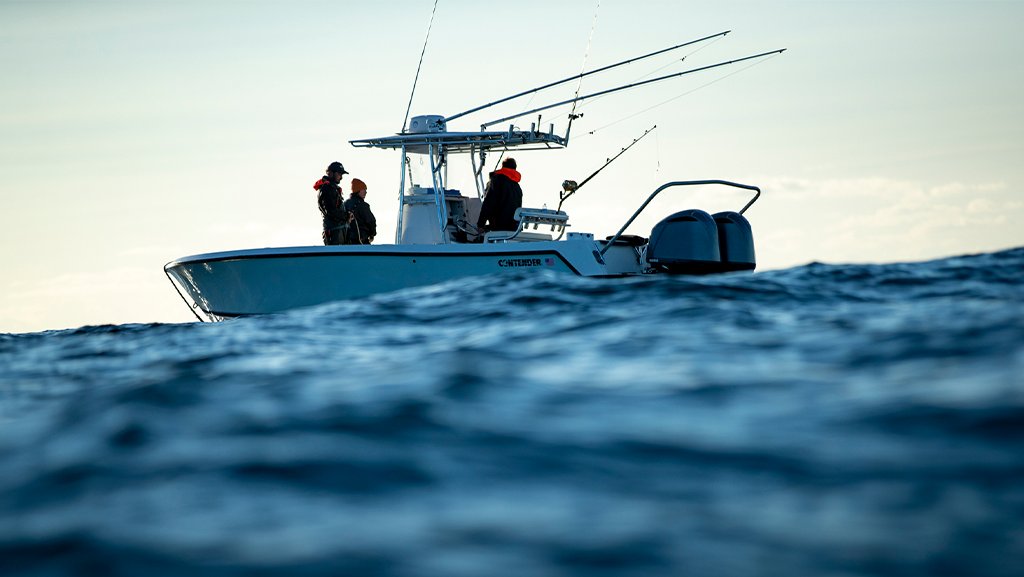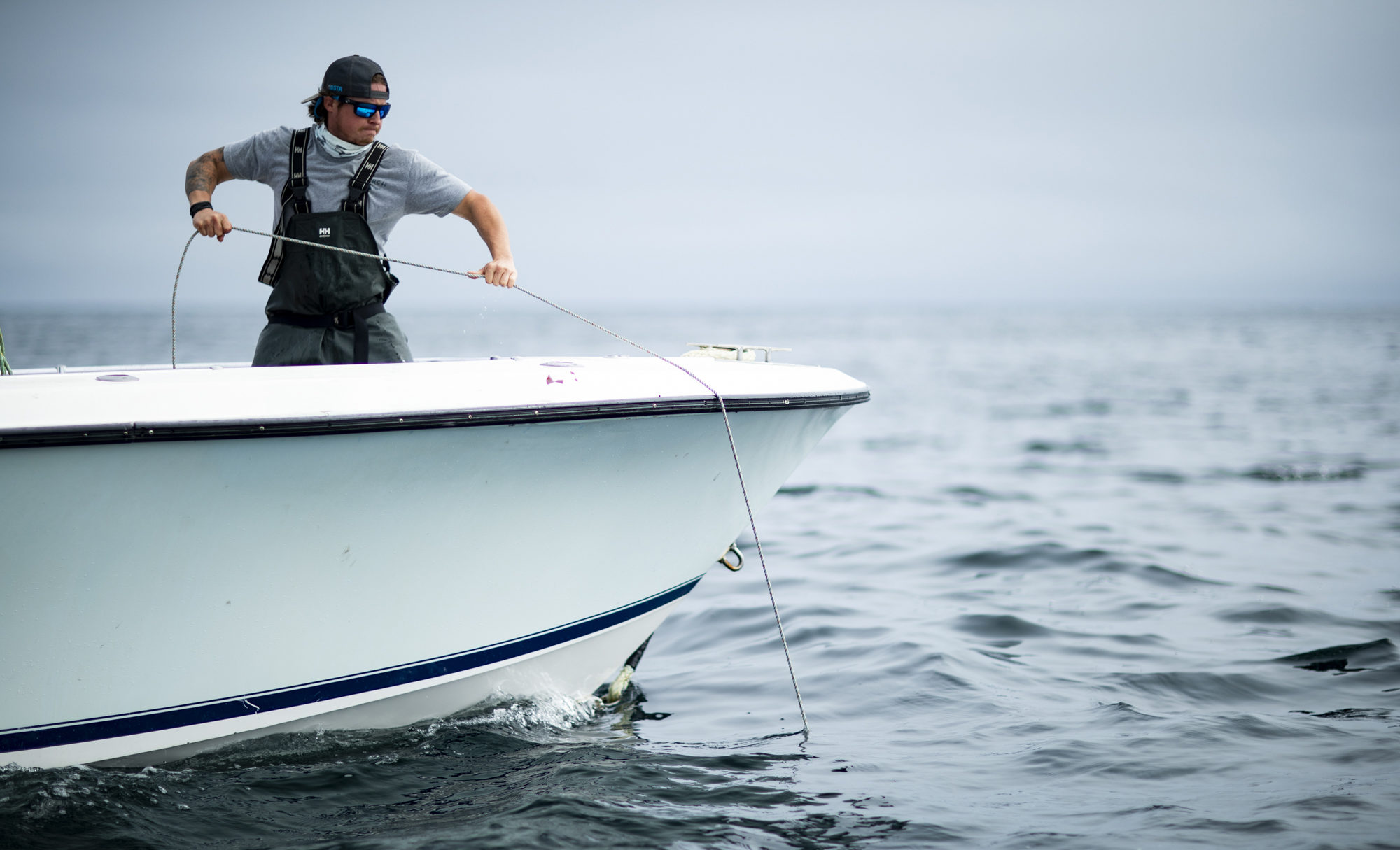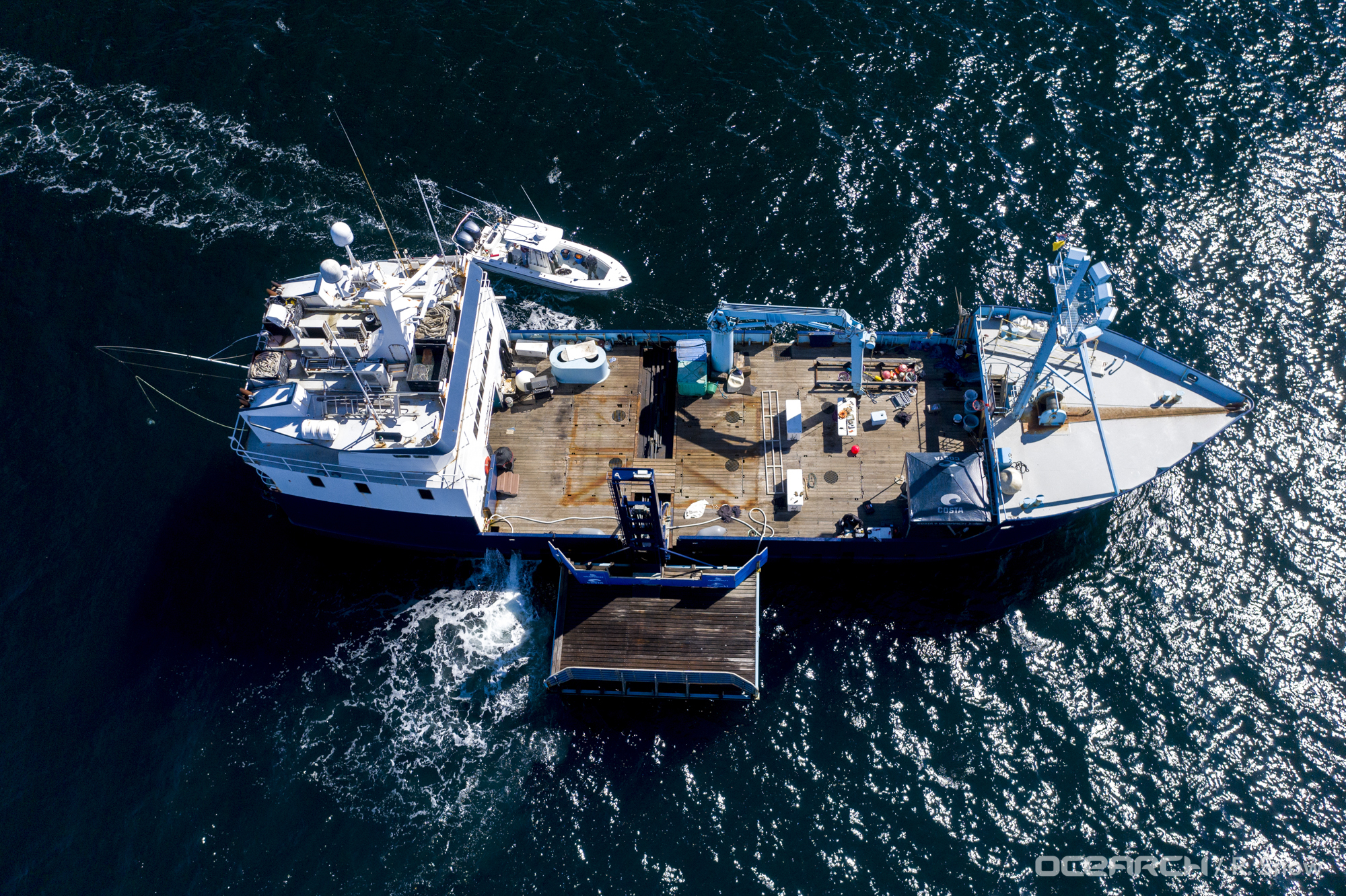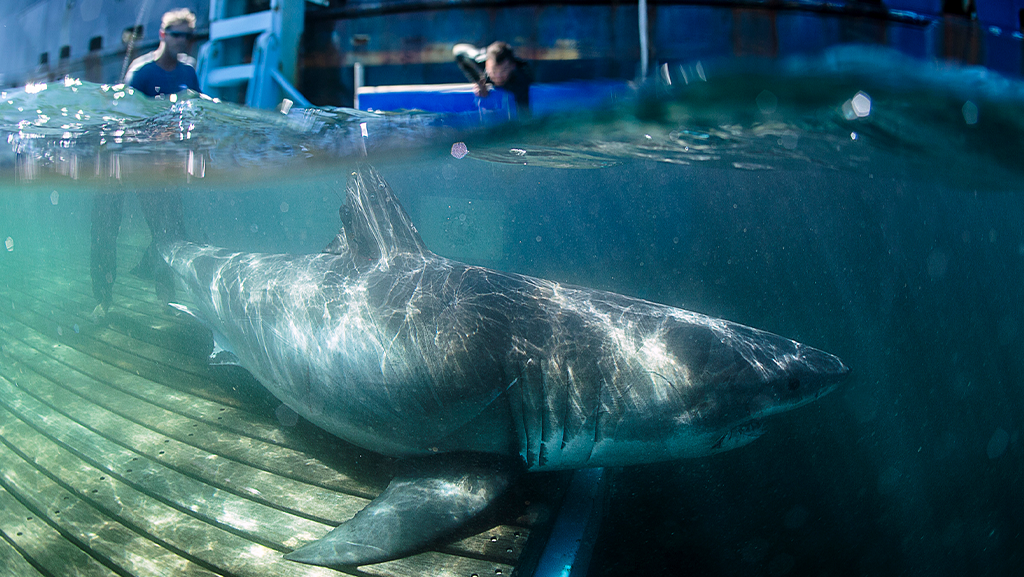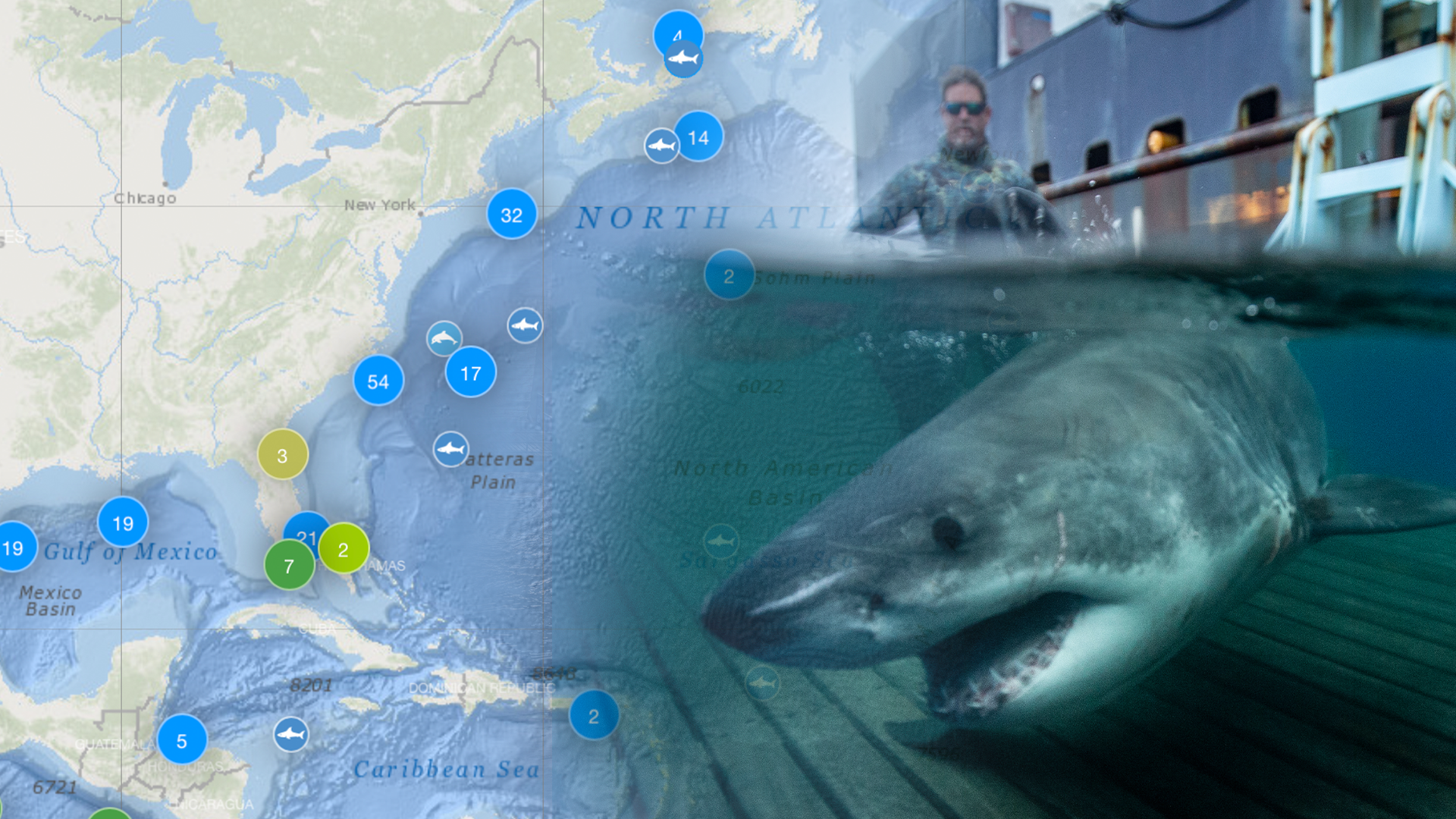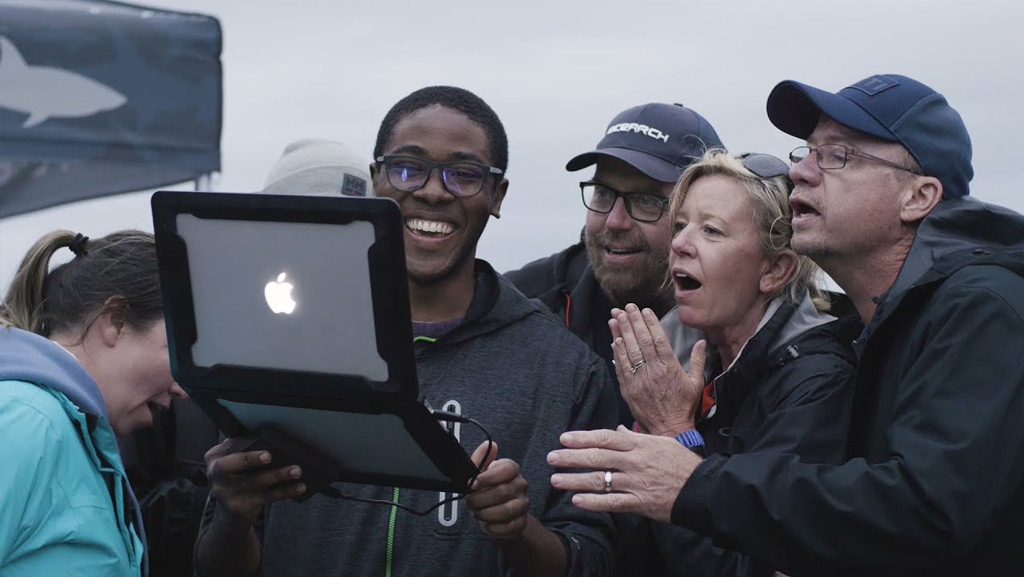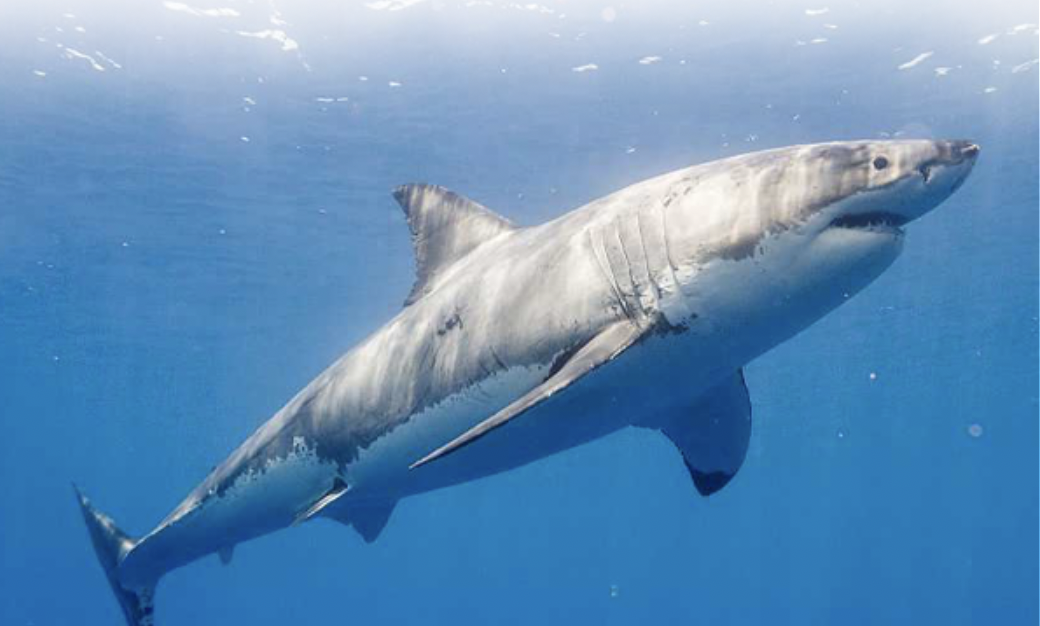SCIENCE BRIEFS
OCEARCH conducts unprecedented research on our ocean’s giants in order to help scientists collect previously unattainable data in the ocean. With a focus on great white sharks, OCEARCH collaborates with unique individuals and institutions across the globe to gather critical samples for more than 25 research projects. Dive deeper into the sampling process and science projects with OCEARCH Science Briefs.
OCEARCH’s Western North Atlantic White Shark Study
Our Western North Atlantic White Shark Study includes 41 investigators from 28 research organization working on 25 different projects. This type of collaboration allows us to increase our rate of learning with every animal we study.
FEATURED SCIENCE BRIEF VIDEOS
What is Field Ecology?
“The study of ecology is all the linkages of both the environment and the animals that live within that environment, and the way they interact. A field ecologist is someone who goes out into the field – the natural environment – to do studies on the animals basically as they are occurring.” – Dr. Dan Madigan, Research Associate University of Windsor
What Is An Acoustic Doppler Current Profiler?
“We’re trying to understand the currents and the different layers of temperature in the ocean. And how those might dictate where predators such as white sharks go in the ocean. And very importantly, it helps dictate where they migrate. We use an Acoustic Doppler Current Profiler to measure currents below the ship.” – Peter Gaube, Oceanographer
What is a “Ping”?
With the help of a SPOT Tag, or Smart Positioning and Temperature Tag, we can follow sharks in real time on the OCEARCH Global Shark Tracker. These SPOT tags create “ping” locations when shark fins break the surface of the water.
“It’s really a miracle of science.” – Dr. Robert Hueter, OCEARCH Chief Scientist
“It’s really a miracle of science.” – Dr. Robert Hueter, OCEARCH Chief Scientist
White Shark Eyes
“A common misconception is that a shark’s vision is very poor. It really couldn’t be further from the truth. Sharks have excellent vision. The story of shark eyes is a story of tremendous diversity. To look into the eye of a shark is to really look back in time at all of the amazing adaptations that really benefit that shark in its current state.” – Mikki McComb-Kobza, PhD Ocean First Institute
White Shark Blood Samples
OCEARCH collects 12+ types of samples for more than 21 research projects on every shark studied. Blood is an important sample since it’s used in most of the research projects that we do. Sharks have an artery and a vein that runs near the bottom of their spinal column. This canal, most accessible in their tail, is called the haemal arch.
What is a SPOT Tag?
OCEARCH uses a variety of tags on our sharks, but a SPOT Tag, or Smart Positioning and Temperature Tag, allows us to follow the individual sharks. These SPOT tags help create “PING” locations when sharks break the surface of the water, and allow you to learn alongside our science team when you visit the OCEARCH Global Shark Tracker to follow their movements.
What are Microplastics?
Every year humans use tons of plastic just once, before throwing it away – and far too much of it ends up in our oceans. Microplastics, defined as a plastic particle less than 5mm in size, can enter the food web through trophic transfer, and we can see them in our white sharks and even in ourselves.
White Shark Pups
Based on the information we do know, Dr. Gisele Montano, reproductive physiologist and veterinarian explains that Atlantic white shark pups seem to be born off the coast of New York and New Jersey. At birth these pups measure around 4ft and 40lbs and are able to fend for themselves.
Great White Shark Monitoring
“From the moment that we engage with an animal to the time that it leaves the lift, we’re always in constant communication about how the animal is doing. There is not a single person on that lift that ever loses sight of the fact that we have an animal that we’re taking care of.”
-Harley Newton, VMD, Dipl. ACVP Veterinarian/Veterinarian Pathologist
-Harley Newton, VMD, Dipl. ACVP Veterinarian/Veterinarian Pathologist
White Sharks & Novel Antibiotics
By collecting bacteria samples from great white shark teeth, gums, eyes, gills, dorsal fin, and ventral fin surfaces researchers can study beneficial microbes, screen for antibiotic production, and possibly develop human therapies. This video features Dr. Kim Ritchie.
How Do Sharks Reproduce?
Explaining the basics… Female sharks have ovaries and give birth through their cloaca. Male sharks have two testes, and two claspers. “Male sharks have to grab the female shark and turn her upside down so they have some kind of control over her. The mating process is a little rough.” – Gisele Montano, DVM, MS Research Associate SeaWorld
What Do White Sharks Eat?
“It’s surprisingly difficult to study something as simple as What Do White Sharks Eat? We take a muscle sample and it gives us an idea of the diet of the shark over the last two years. What (food source) do they really rely on the most? We can work to make sure that the area stays available to white sharks.” – Dr. Dan Madigan, Research Associate, University of Windsor
Getting Involved With Field Research
You don’t have to live close to the ocean to participate in marine research. When Joseph Fotso from the University of Windsor began studying biology he didn’t think he would be doing field research with OCEARCH. “Don’t feel that if you don’t live close to the ocean, you can’t do this kind of research.” – Joseph Fotso
Science Brief Sunday: White Shark Reproduction & Mating
“When we are looking at white shark reproduction and mating, I am only capturing one piece of a big puzzle…the data that we collect is going to help us better put together the life history of the white shark and inform future conservation policies” – James Gillis, Postdoctoral Research Scientist, South-East Zoo Alliance for Reproduction & Conservation, SeaWorld
OCEARCH produces an extensive official Science Brief for each expedition that outlines the objectives of every research project, and the collaborative team of researchers and institutions that are working on them. View all the details here.
Stay Connected!
Get the latest tracker updates, events and giveaways sent directly to your inbox.
